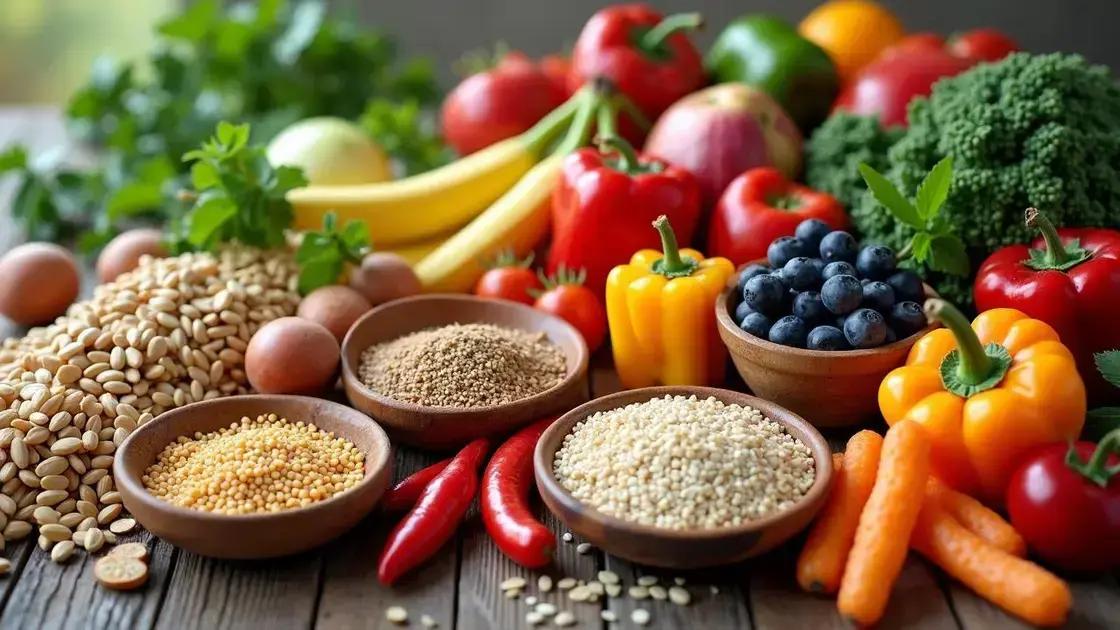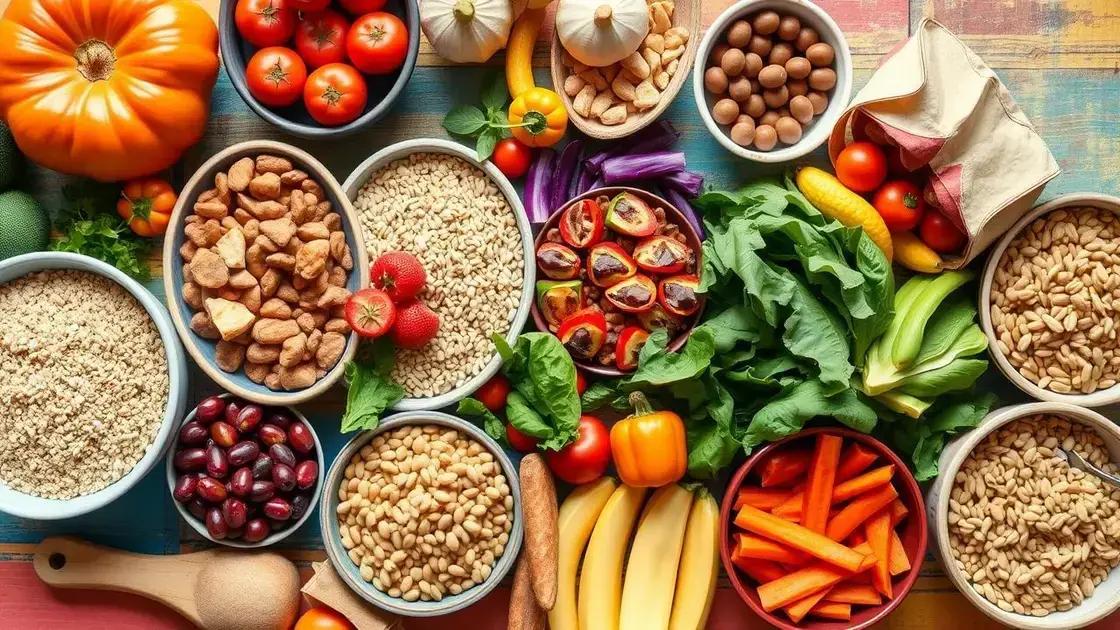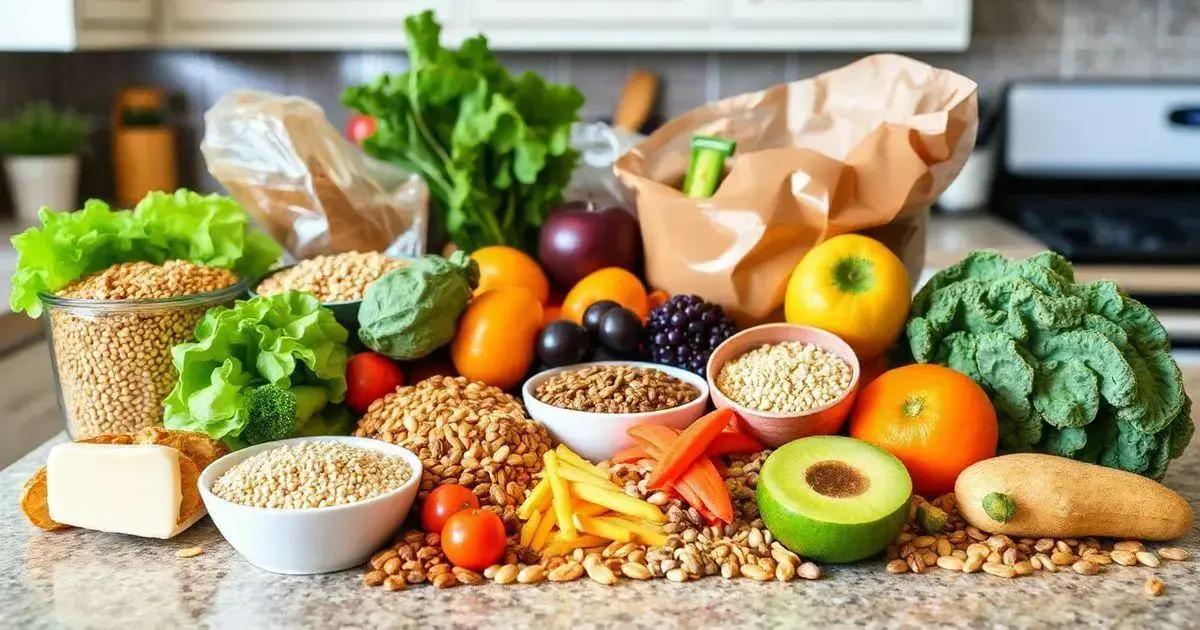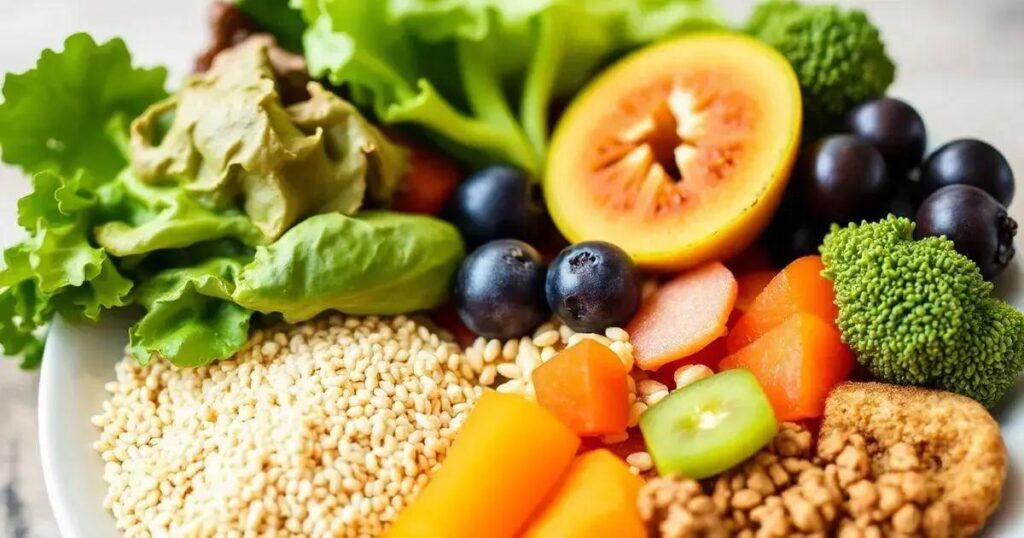The role of fiber in men’s health after 50 is critical as it aids digestion, supports heart health, helps manage weight, and stabilizes blood sugar levels. Incorporating fiber-rich foods like fruits, vegetables, whole grains, and legumes can significantly enhance overall health and wellbeing during this stage of life.
As men age, particularly after the age of 50, maintaining a healthy diet becomes increasingly important. One essential element in this diet is fiber. Fiber plays a significant role in men’s health after 50 by aiding digestion, lowering cholesterol, and preventing chronic diseases. In this article, we will delve into the various benefits of fiber, identify top sources, and provide practical tips for increasing fiber intake.
Understanding Fiber and Its Benefits

Fiber is an essential nutrient that plays a key role in maintaining good health, especially for men over 50. As we age, our bodies require different types of nutrients to function optimally. Fiber helps in several vital areas of health.
Benefits of Fiber
One of the primary benefits of fiber is its ability to aid digestion. Adequate fiber intake can prevent constipation, making it easier to maintain regular bowel movements. It also assists in keeping the gut healthy by fostering beneficial bacteria.
Heart Health
Another critical aspect is heart health. A diet rich in fiber can help lower cholesterol levels. Soluble fiber, in particular, binds to the cholesterol in the digestive system and aids in its removal from the body. This can significantly reduce the risk of heart disease.
Weight Management
Fiber is particularly beneficial for weight management. Foods high in fiber tend to be bulkier, which helps a person feel fuller for longer. This can lead to reduced calorie intake and support weight loss efforts.
Blood Sugar Control
Moreover, fiber helps in regulating blood sugar levels. Including fiber in meals can slow down the absorption of sugar, which can prevent spikes in blood sugar and insulin levels, crucial for men at risk for diabetes.
Understanding fiber’s role opens up new avenues to improve overall wellness as men age. Incorporating fiber-rich foods into daily diets is a vital step towards achieving better health outcomes.
How Fiber Affects Men’s Health After 50

Fiber has a significant impact on men’s health, especially for those over 50. As we age, our bodies undergo various changes that make fiber increasingly important.
Digestive Health
One of the most noticeable effects is on digestive health. For men over 50, fiber helps to prevent common issues such as constipation and bloating. Increased fiber intake aids in movement through the digestive tract, promoting regular bowel movements.
Heart Health
Fiber also plays a crucial role in heart health. Studies show that men over 50 who consume enough fiber can significantly lower their risk of heart disease. Soluble fiber can help manage cholesterol levels, which is crucial as cardiovascular health is particularly vulnerable in older age.
Blood Sugar Levels
Another important effect is on blood sugar levels. Fiber helps regulate glucose absorption, which is particularly beneficial for men who may be at risk of developing type 2 diabetes. This property prevents sudden spikes and crashes in blood sugar, promoting better overall energy levels.
Weight Management
Additionally, fiber can assist in weight management. Men over 50 may experience changes in metabolism, making it more challenging to maintain a healthy weight. Fiber-rich foods keep you feeling full longer, which can help control appetite and reduce unhealthy snacking.
Understanding how fiber affects health allows men to make better dietary choices, enhancing wellness as they age.
Men should ensure they include adequate fiber in their diets to support these essential health aspects as they reach and surpass the age of 50.
Top Fiber Sources for Older Men

Incorporating fiber-rich foods into your diet is essential for maintaining health, especially for men over 50. Here are some of the top fiber sources that can help enhance well-being:
Fruits
Fruits are not only delicious but also packed with fiber. Some excellent options include:
- Apples: A medium apple contains about 4 grams of fiber. Eating the skin boosts the fiber content.
- Bananas: A great source, with approximately 3 grams of fiber per medium banana.
- Oranges: One medium orange has around 3 grams of fiber, along with vitamin C.
Vegetables
Vegetables are another fantastic source of fiber. Aim to include a variety such as:
- Broccoli: This power vegetable contains about 5 grams of fiber per cup when cooked.
- Carrots: Raw carrots provide around 4 grams of fiber per cup, making them a crunchy snack.
- Sweet Potatoes: A medium sweet potato offers about 4 grams of fiber, plus various nutrients.
Whole Grains
Whole grains are key in providing fiber to your diet. Consider including:
- Oats: A bowl of oatmeal can have about 4 grams of fiber. Quick or rolled oats both work well.
- Brown Rice: A cup of cooked brown rice contains around 4 grams of fiber.
- Quinoa: This super grain provides about 5 grams of fiber per cup when cooked.
Legumes
Legumes are some of the richest sources of fiber available:
- Beans: Varieties like black beans or kidney beans contain up to 15 grams of fiber per cup when cooked.
- Lentils: A cup of cooked lentils provides about 15 grams of fiber, making them an excellent choice for soups and salads.
- Chickpeas: Also known as garbanzo beans, they offer around 12 grams of fiber per cup when cooked.
Incorporating these fiber sources into daily meals can significantly benefit men’s health, particularly as they age.
Tips for Increasing Fiber Intake Easily

Incorporating more fiber into your diet can be simple and enjoyable. Here are some easy tips for increasing fiber intake:
Start Gradually
Introducing fiber from different foods should be done gradually. Begin with one or two servings of high-fiber foods each day, and slowly increase your intake. This can help prevent digestive discomfort.
Choose Whole Grains
When selecting grains, opt for whole grain options. Replace white bread and pasta with whole grain versions. They generally contain more fiber. For example, choose whole grain bread or brown rice instead of white.
Add Seeds and Nuts
Seeds and nuts are great snacks that add fiber. Chia seeds and flaxseeds can be sprinkled on cereals or mixed into yogurt. Almonds and walnuts are tasty options as well and can be eaten alone or added to salads.
Incorporate Beans and Legumes
Beans and legumes are fiber powerhouses. Include them in your meals. Add kidney beans to chili, chickpeas to salads, or lentils to soups. They are versatile and can be used in various dishes.
Snack on Fruits and Vegetables
Choose whole fruits and vegetables as snacks. Fresh fruits like apples and bananas or raw veggies like carrots are easy to grab and full of fiber. Keep them visible in your kitchen for quick access.
Read Food Labels
When shopping, check food labels for fiber content. Aim to choose products that have at least 3 grams of fiber per serving. This can help you make better choices at the store.
Stay Hydrated
As you increase your fiber intake, drink plenty of water. Staying hydrated helps fiber do its job properly in your digestive system. Aim for at least eight glasses of water each day.
By applying these simple tips, you can easily boost your fiber intake and support your health as you age.
In Summary: The Importance of Fiber in Men’s Health After 50
As we age, particularly after 50, fiber plays a vital role in maintaining overall health. Increased fiber intake can enhance digestive health, support heart health, aid in weight management, and help regulate blood sugar levels.
Understanding the various sources of fiber, such as fruits, vegetables, whole grains, and legumes, empowers you to make better dietary choices. Implementing simple tips for adding fiber to your meals can make this process easy and enjoyable.
By prioritizing fiber in your diet, you can significantly improve your health and well-being during these important years. Remember, it’s never too late to focus on nutrition and make positive changes for a healthier future.
FAQ – Frequently Asked Questions About Fiber and Men’s Health After 50
Why is fiber important for men over 50?
Fiber is essential for maintaining digestive health, heart health, weight management, and stable blood sugar levels, especially as we age.
What are some good sources of fiber for older men?
Top fiber sources include fruits like apples and bananas, vegetables like broccoli and carrots, whole grains like oats and brown rice, and legumes like beans and lentils.
How can I easily increase my fiber intake?
To increase fiber intake, start gradually, choose whole grains, add nuts and seeds to your meals, snack on fruits and vegetables, and stay well-hydrated.
What are the benefits of a high-fiber diet?
A high-fiber diet can improve digestion, lower cholesterol levels, help with weight management, and maintain stable blood sugar levels.
Can fiber help with weight management for men over 50?
Yes, fiber-rich foods can help you feel full longer, which may prevent overeating and support weight management efforts.
How much fiber should I aim for daily?
Men over 50 should aim for about 30 grams of fiber per day, adjusting as needed based on individual health and nutritional requirements.












